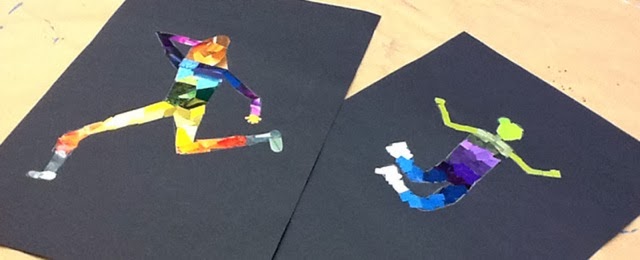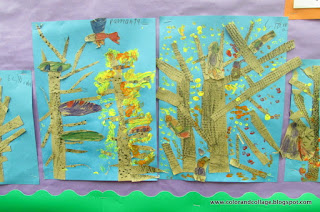Some of you may have inherited a roll of metal tooling foil or seen some of these beautiful metal projects on blogs and pinterest and not known what the material is.
It is metal tooling foil. It can be bought cut down already or in a roll (and comes in silver, gold, copper).
For an example from Dick Blick click
here.
Here are the tricks to using it!
First of all you can cut it down on the paper cutter! Woo!
It can also be cut with scissors if you want to alter the shape.
(I would only let students fourth grade and older do this though.)
As I explain to my students, you need a "cushion" underneath the metal when you draw on it so that there is some give for the metal and place for it to be pushed to. I use the metaphor of what it feels like to jump on a hard floor versus a gym mat. For the cushion I fold up newspaper, works great.
I also make my students use the fat pencils (the kinder ones) which have a fatter softer point so they won't make a hole and the point won't break as easily.
The cool thing is that you can draw on both sides so that the design both gets incised/engraved
and also can pop out. We really focus on texture during this process.
You can't erase any lines so we do a lot of rough drafts.
I used to have the kids tape and trace their rough draft designs but I aborted that a while ago.
For coloring, this is tricky to get across- I really emphasize coloring in the negative spaces and letting the silver pencil lines show (like a coloring book) but there are always one or two that sneak past me and just go ahead and trace their lines.
Colored sharpies (or liquid metal markers) work best for coloring. Sharpies are actually transparent and not opaque- so the color looks metallic which the kids love.
I did a patina experiment this fall- where we covered the metal with black tempera, let it set up for 1 minute, then rubbed away the paint. I think they came out cool. It was fun to try something different.
Bonus- you can punch a hole in the metal as well.
Last year I cut down 2" squares and punched a hole in the corner.
The students made snowflake designs and strung yarn through the hole to hang them.
If you want them "framed" you can staple it right to posterboard.

.JPG)
























.jpg)




























